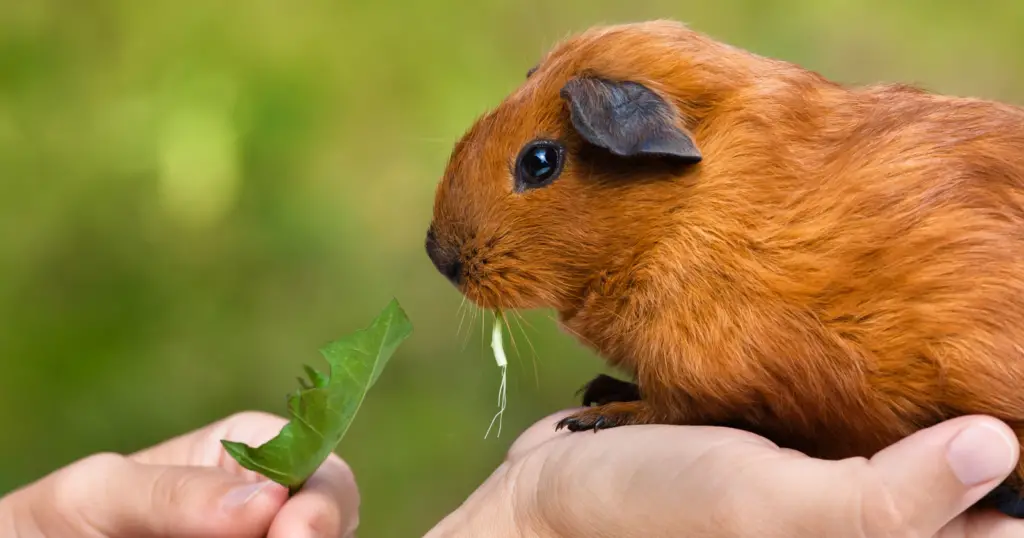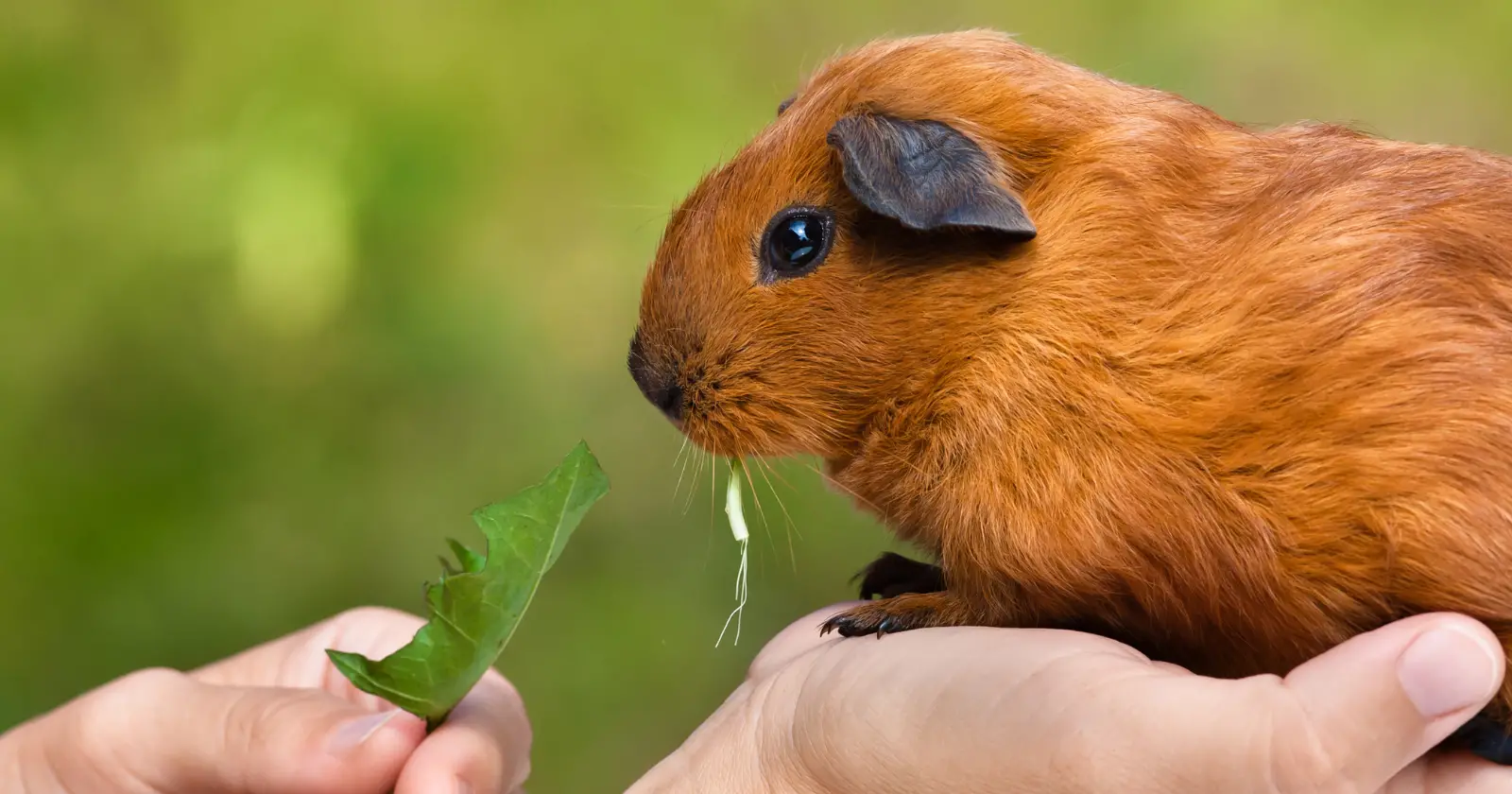You may wonder, what are the best ways of Feeding My Guinea Pig? If you are looking for The Dos and Don’ts of Feeding My Guinea Pig, you are at the right place. Guinea pigs are small and personable but require special care and attention.

This means you must be diligent in ensuring they get what they need because they depend on you to provide them with the food and nourishment to keep them healthy pets and friends for years. This article will explain The Dos and Don’ts of Feeding My Guinea Pig.
The Dos and Don’ts of Feeding My Guinea Pig: Explained
Wondering about Feeding My Guinea Pig? Did you know that guinea pigs are rodents and not even related to pigs? Well, they are considered to be domesticated and part of the cavy or Caviidae family.
Because of their robust body type, they resemble other rodents with their short limbs, large head and eyes, and short ears. Heard of being vegan? Well, guinea pigs are one of the animals for this type of lifestyle is a must.
As herbivores, guinea pigs get their energy from plants and plant-based foods. Their body makeup is designed to be able to process plants using their special teeth and digestive system.
What Can Guinea Pigs Eat
Guinea pigs should have a basic diet that includes hay, Vitamin C, and fresh vegetables. Timothy hay is the preferred hay type because its high in fiber and supports digestive health. Low-calcium hay or pellets will also work if you don’t find or can’t get Timothy hay.
The preferred basic diet for guinea pigs is unlimited amounts of Timothy or other low-calcium hay, supplemented with smaller amounts of commercial, high-fiber, Timothy-hay-based guinea pig pellets. Vitamin C (see below) should be given each day.
Hay should be offered as a free choice throughout the day. Hay and pellets should be supplemented with various fresh, well-washed, leafy greens or colored vegetables (especially those high in vitamin C, such as bell pepper, tomato, and asparagus).
Fresh, clean water should always be available. With water, it’s easy for the guinea pigs to tip over bowls or soil the clean water with food. To make sure they are getting what they need, sipper bottles or water dispensers are preferred but must be cleaned daily and checked for obstructions.
What Can Guinea Pigs Not Eat
Carbohydrates, or carbs as we call them, are considered sugars, starches, and fiber. Now, for humans, it may be okay in small amounts, but for little bodies like a guinea pig, it’s not.
Certain foods are too high in carbohydrates and fat for guinea pigs to eat. When considering what your guinea pig can’t eat, these should ALWAYS be avoided: Oats, seeds, nuts, and dry cereals. Because it has little nutritional value, iceberg or head lettuce should also not be considered or offered.
| Good to Eat | Not Good to Eat |
| Green leaf lettuce Parsley | Grains Dried beans |
| Red leaf lettuce Romaine lettuce | Peas Seeds |
| Dandelion greens Sweet potato | Nuts Garlic |
| Spinach Watercress | Onion Potatoes |
| Kale Coriander | Peanut butter Iceberg lettuce |
What Vegetables Can Guinea Pigs Eat
Vegetables are the edible portions of a plant that aren’t fruit. They are typically grouped and categorized according to the part being eaten or used. For example, the leaves produce lettuce, carrots come from the root, and celery comes from the stem.
Certain vegetables can be added to their diet as long as it’s fresh, like leafy greens or colored vegetables that are high in Vitamin C. Good vegetable choices include green or red leaf lettuce, broccoli, cauliflower, kale, carrot tops, and squash.
Watch this video:
Can Guinea Pigs Eat Fruit?
Guinea pigs can eat fruit but should be VERY limited. Fruit is high in sugar and can cause life-threatening issues like intestinal imbalance or diarrhea.
In moderation, you can give as a treat – a small amount of orange (citrus), a few blueberries, and a slice of kiwi or high-fiber fruits such as pear and apple.
Why Guinea Pigs need Vitamin C (Feeding My Guinea Pig)
Vitamin C helps to provide the nourishment, development, and maintenance needed for your guinea pig to grow and maintain a healthy disposition. Because it aids in healing wounds, don’t forget that a lack of Vitamin C can also make your guinea pig prone to infections and potential skin problems.
If you think there is an issue with being Vitamin C deficient, like swollenness, ulcers, hair coat appearing to be rough, or even not wanting to move around, take your guinea pig to a veterinarian as soon as you can for a checkup.
Guinea pigs cannot produce their own Vitamin C, so supplements are critical. Pellet-based Vitamin C can be used, or you can feed your guinea pig fruits and vegetables with Vitamin C included.
Fruits and vegetables that are high in Vitamin C are recommended and essential as part of their daily diet. This article helps you know the facts about Feeding My Guinea Pig.
Some high Vitamin C vegetables are tomatoes, parsnip, celery leaves, cucumber, and kale. You can still feed them lower Vitamin C vegetables like carrots, turnips, and beets, but not daily because it’s not meeting their daily nutritional needs.
| Low Vitamin C Fruits and Vegetables | High Vitamin C Fruits and Vegetables |
| Celery Carrots | Lettuce Spinach |
| Asparagus Apples | Tomatoes Kale |
| Beets Yams | Grapes Orange |
| Apricots Peaches | Strawberries Mango |
| Banana Pears | Guava Pineapple |
Keep Your Guinea Pig on Track
Keeping your guinea pig on track is key to making sure it stays healthy. One of the ways you can make sure your guinea pig is getting what they need is to use a chart or weekly schedule. I provided a sample below of Feeding My Guinea Pig
| Feeding My Guinea Pig Weekly Chart |
| Monday – Spinach or kale, Parsley, Hay |
| Tuesday – Carrots, Dandelion greens, Hay |
| Wednesday – Timothy hay pellets, Parsley, Celery |
| Thursday – Bell peppers, Broccoli, Hay |
| Friday – apple, squash, green or red leaf lettuce, Hay |
| Saturday – Carrot tops, Brussels sprouts, Hay |
| Sunday – Blueberries, Hay, Spinach |
| ****Water should be given and available daily****** |
Conclusion: Feeding My Guinea Pig
We want our guinea pig to live their best life. Even I always wonder about the best Feeding My Guinea Pig. Its diet is vital to happiness, health, and a great pet. Make sure you develop habits allowing you to feed your guinea pig adequately and safely with the right combination.
What Else Can Guinea Pigs Eat?
If you are looking for more information, walkthroughs and troubleshooting about Guinea Pigs and their diet, here are some additional posts you can check out:
A mix or combination of the “good to eat” fruits and vegetables will ensure your guinea pig has variety and does not get bored. (Yes, they get bored with food sometimes, as we do!).
The lists and feeding chart above will help you succeed and ensure your guinea pig is properly fed. So now, you know the Dos and Don’ts of Feeding My Guinea Pig. Visit ownyourpet to learn more.

